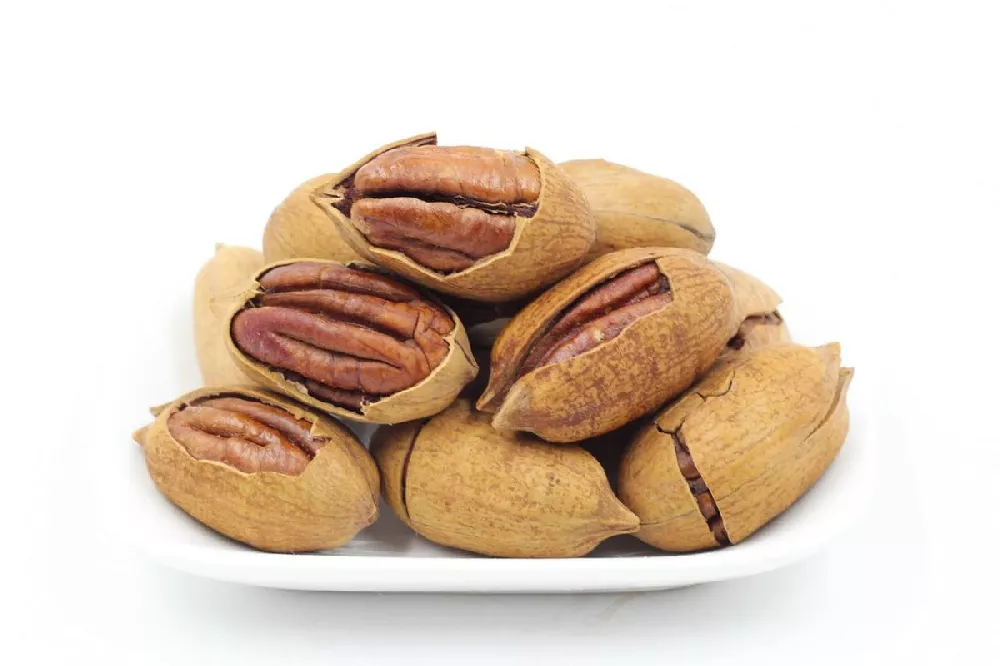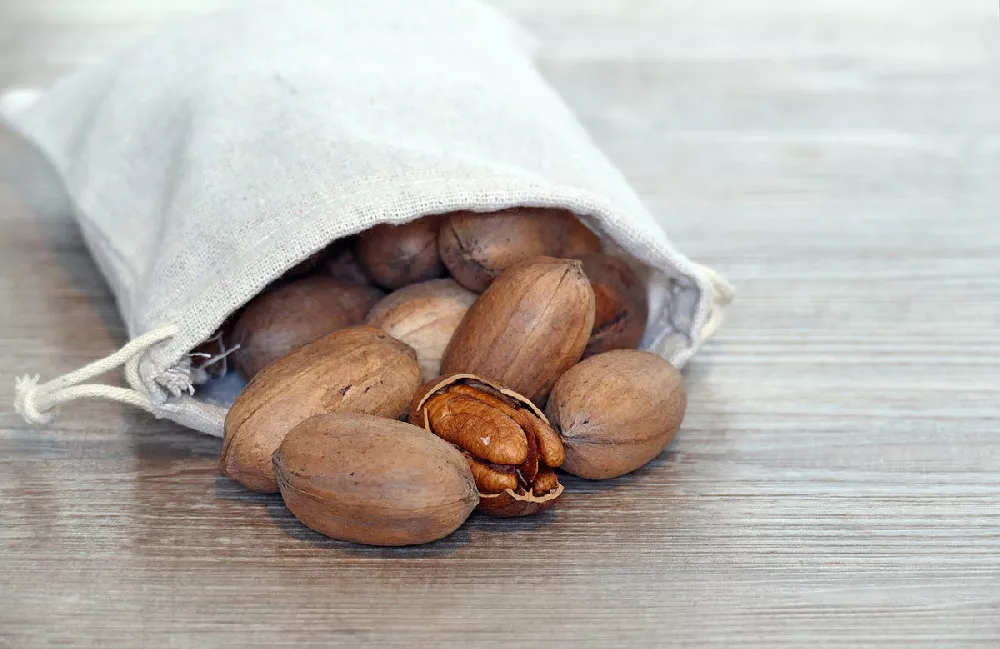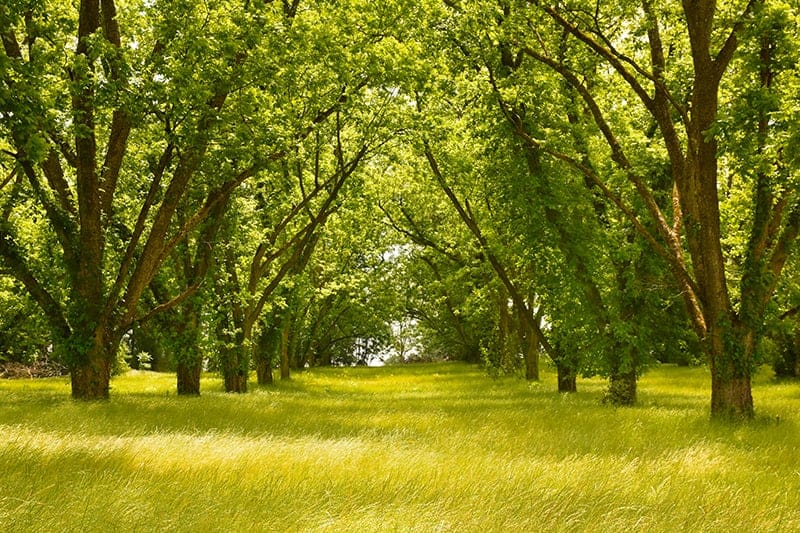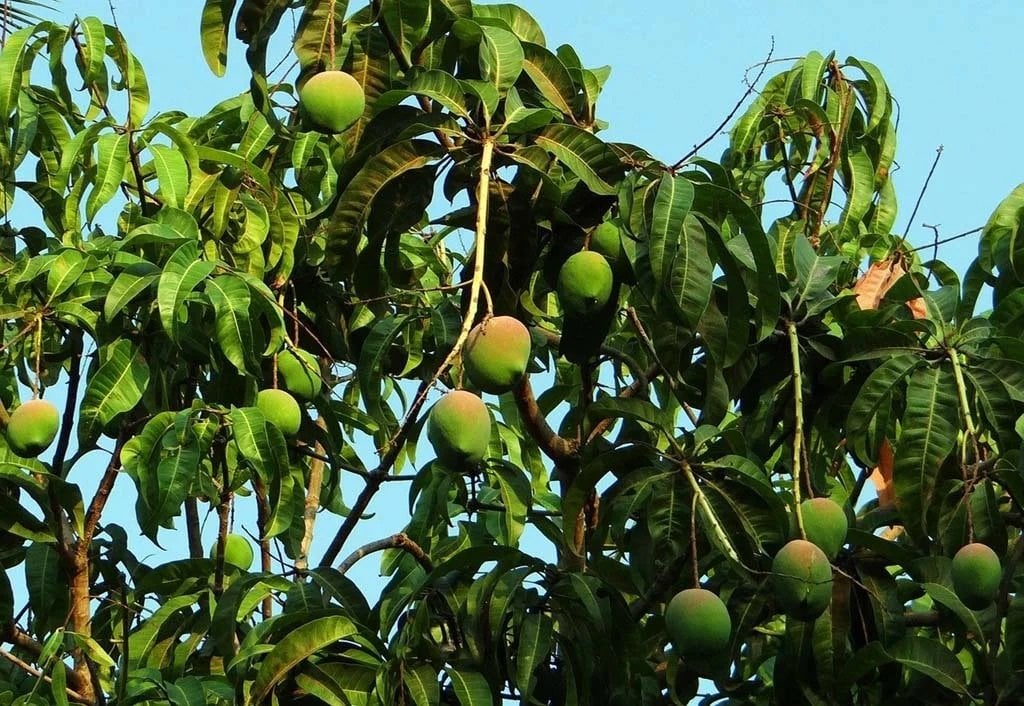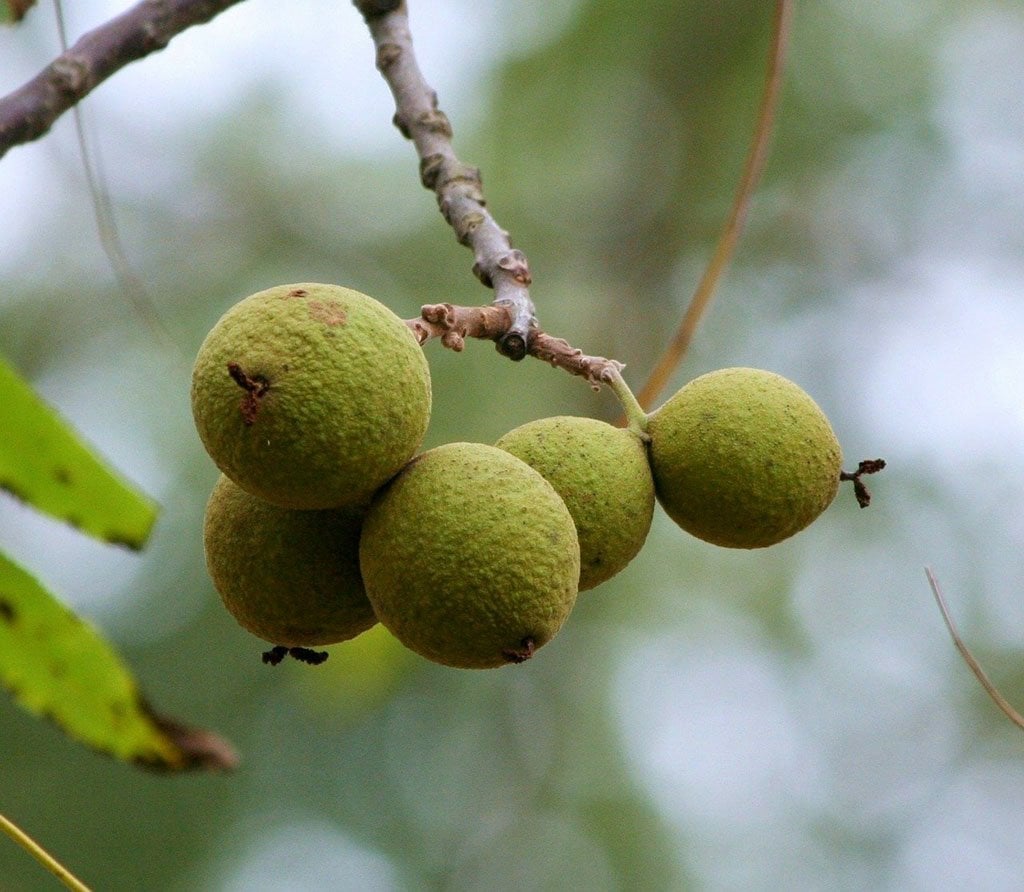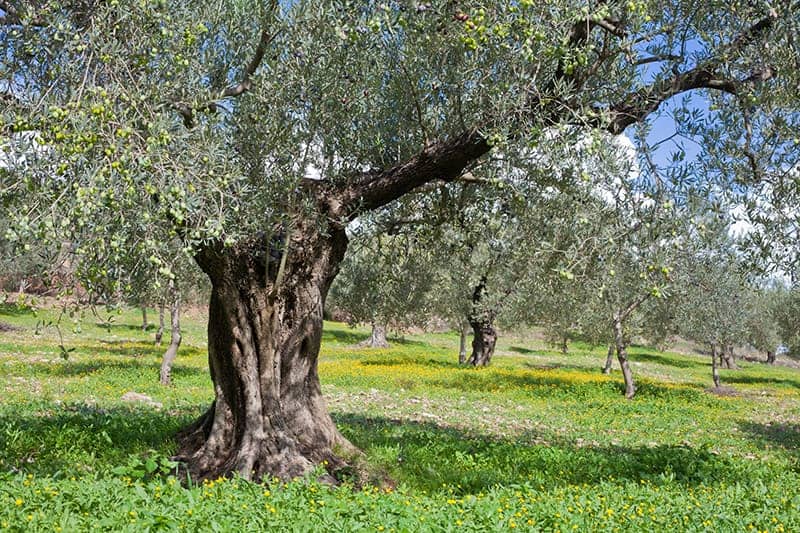- Home >
- Pecan Trees
Pecan Trees for Sale
Filters
Price Range
Growing Zones
Plant Type
Sunlight
Mature Height
Plant Characteristics
2 Results
Pecan Trees – Buying & Growing Guide
Planting a pecan sapling is making a commitment to the future. When it’s mature, it may soar up to 100 feet and provide a harvest that can be measured in the buckets-worth. But even when still fairly young your pecan tree will give you a modest harvest of nuts, and it will do so without a great deal of nurturing or care — making it a good choice for beginning gardeners.
How to Grow Pecan Trees
How to plant pecan trees
Choose a location for your pecan tree that gets at least six to eight hours of sun a day and drains well. If your soil is heavily clay, amend it with peat moss before planting. Pecan trees can grow to be 100 feet tall, so if you are planting more than one to ensure pollination, space your trees at least 75 feet apart.
If your sapling has a long tap root, it’s okay to trim it back by a half to a third of its length before planting. Dig a hole that will accommodate the tap root and is twice as wide as the root ball. Plant the sapling so that the top of the root ball is even with the soil, and backfill (replace the dirt you removed from the hole) with soil you’ve enhanced with compost.
When the hole is almost full, water the sapling well. Finish filling the hole after the water has seeped in, and then give your tree another drink. Do not fertilize the tree after planting.
How to achieve maximum results
Achieving maximum results for your newly-planted pecan tree requires good initial care. Water it every few days unless you’re getting at least an inch of rain per week. Use a trunk guard or paint the lower trunk with white latex paint to avoid sun scald. Several inches of organic mulch will keep weeds away and eventually break down to provide food for your tree.
How to Care for Pecan Trees
Watering and nutrients
Pecans are thirsty trees and should be watered once per week. Ideally, you want the water to seep in at least three feet, although this is hard to measure. Monitor your tree carefully—drooping leaves may mean it needs more water.
Beginning in your tree’s second year, fertilize in early spring with a formula that is nitrogen-rich and designed for fruit and nut trees. Nut trees also need a dose of zinc sulphate, so make sure the fertilizer you choose has this important trace mineral. Don’t fertilize your tree after July 1, as late-season growth may be susceptible to frost.
Pollination
Pecan trees are monoecious, meaning each tree has both male and female flowers. But you’ll need more than one variety for a good harvest, since the male and female flowers are receptive at different times on a single tree. The primary agent of pollination is wind, which allows pollen to blow from one tree to the flowers of another.
Pruning
You can prune pecan trees in late winter, before they break dormancy. Prune back any dead or diseased branches, and those that are rubbing against each other. You may also want to prune out low branches that interfere with mowing or irrigation. Then prune selectively to open up the center of the tree so that air and light can circulate.
Pests and diseases
Pecan trees are susceptible to a number of pests and diseases, and you will need to do selective spraying as needed. Diseases you may see on your tree include crown gall, brown leaf spot, and powdery mildew. A general orchard spray designed for fruit and nut trees will help.
Common pests include aphids, pecan nut casebearers, and borers. Pecan weevils and peach twig borers may also attack your tree. Check with your county extension agent to see what pests are prevalent in your region and what the recommended controls are.
Harvesting
Pecans are harvested in early to mid fall, once your trees have reached three to eight years of age. Harvest the pecans after they’ve fallen from the tree, when the husks have split and the shell has turned brown. Generally, your pecan tree will have a heavy harvest one year and a light harvest the following year.
Light
Full sun is essential for the proper growth of a pecan tree, but given the requirement for growing these trees in wide-open spaces that can accommodate their eventual large size, finding a full sun spot shouldn’t be too difficult. Pecan trees should be planted a minimum of 30 feet away from nearby trees or buildings, so it’s unlikely they’ll fall into the shade.
Temperature
The pecan tree is native to central and southern states in the US, including Texas, where it is the state tree. It originates in Tennessee, Oklahoma, Louisiana, Kentucky, Missouri, Arkansas, Illinois, and Indiana, and is now widely grown across most of the southern US. The tree loves warm climates and is hardy through USDA zones 5 to 9, though some pecan trees in these zones will still struggle with low night temperatures.
Pecan trees need warmth throughout the night as well as during the day, and often in the lower zones, the temperatures will drop too low during the night for the pecan tree to cope with. Some varieties will be better at adapting to cooler temperatures than others.
Pecan Tree Varieties
Pecan trees can be difficult to grow and require plenty of patience, with most trees not producing any nuts until they are between 6 and 10 years old. If you’re up to the challenge, these are a couple of popular varieties to choose from.
‘Pawnee’
This variety is hardy through zones 6-9, but it has been known to grow successfully as far north as New York. It is smaller than most other pecan trees, typically growing to around 30 feet in height.
‘Candy’
This variety produces nuts earlier in the season and grows to heights of up to 70 feet.
